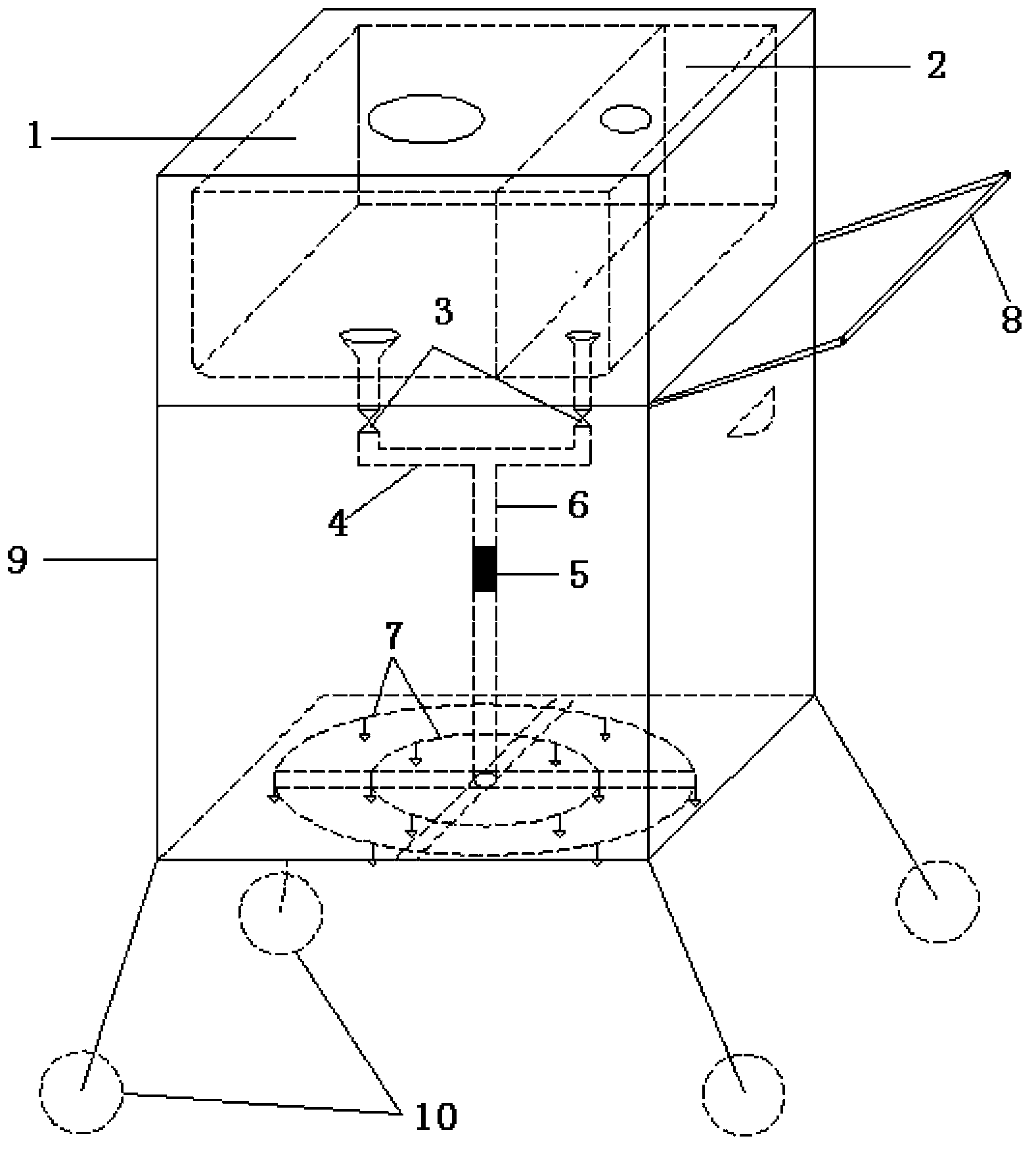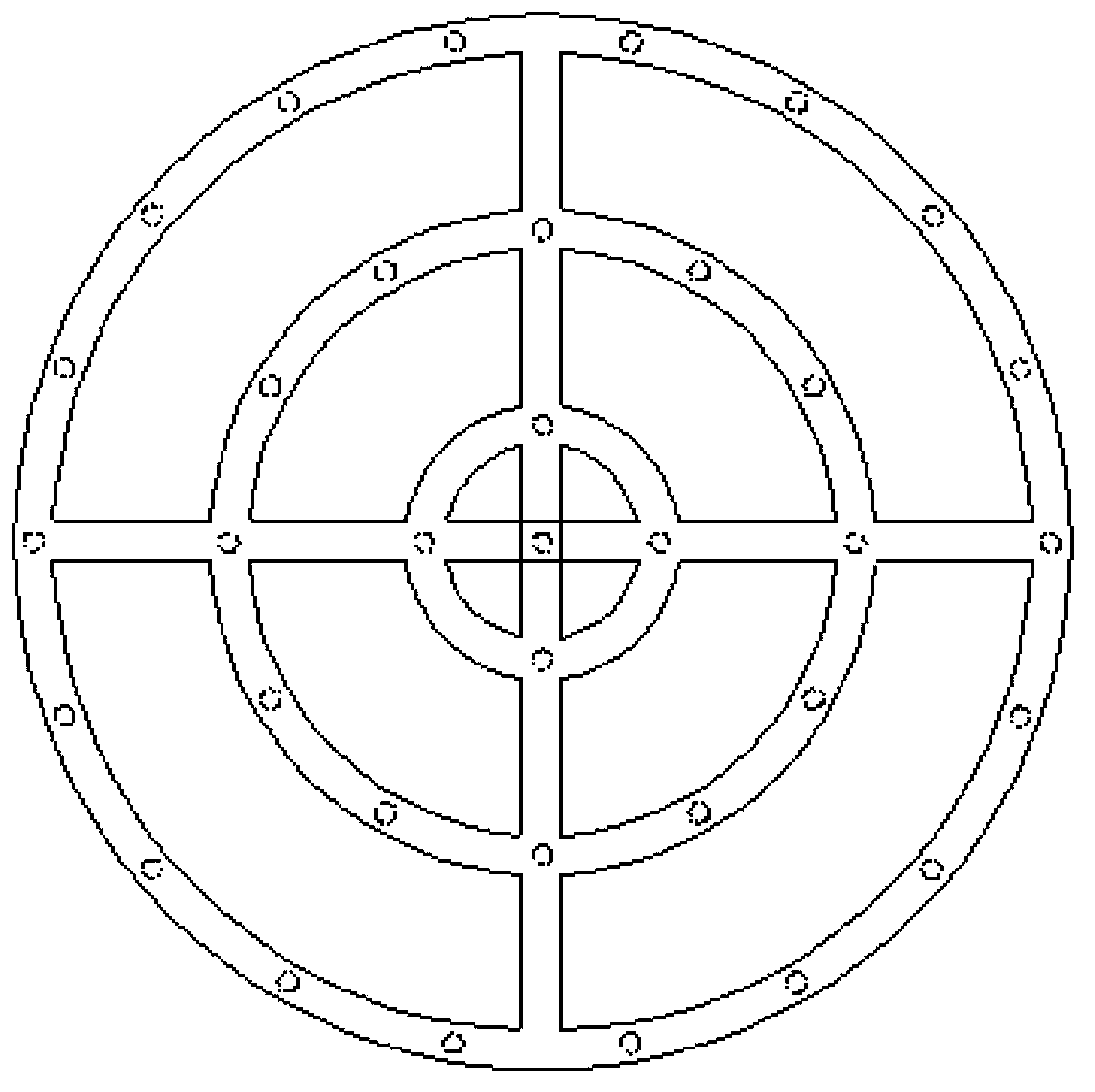In-situ remediation method aiming at dispersible petroleum-contaminated soil
An oil pollution and in-situ remediation technology, applied in the field of environmental engineering, can solve problems such as difficulty in adapting to dispersed oil-contaminated soil remediation, high chemical consumption, and low remediation efficiency
- Summary
- Abstract
- Description
- Claims
- Application Information
AI Technical Summary
Problems solved by technology
Method used
Image
Examples
Embodiment 1
[0038] Example 1: Restoration of S1 area in lightly polluted area
[0039] After measurement, the area of oil-contaminated soil in the S1 area of the lightly polluted area is 1m 2 , the average depth of pollution is 2cm. After sampling and weighing, the total amount of oil-contaminated soil in the S1 area of the lightly polluted area is 53kg.
[0040] The OCMA-350 non-dispersive infrared petroleum analyzer is used to detect that the average concentration of petroleum hydrocarbons in petroleum-contaminated soil is 14.35g / kg. According to the concentration of petroleum hydrocarbons, it is necessary to configure H with a concentration of 150mmol / L. 2 o 2 . With crosslinking agent citric acid (17.4g / L) and FeSO 4 ·7H 2 O (9.7g / L) is formulated into iron solution, so that Fe in iron solution 2+ The concentration of the iron solution is 69.8mmol / L, and the pH value of the iron solution is adjusted with NaOH before use, so that the oil-contaminated soil remains neutral aft...
Embodiment 2
[0047] Example 2: Restoration of the S2 area in the moderately polluted area
[0048] After measurement, the area of oil-contaminated soil in S2 area of moderately polluted area is 1m 2 , The average depth of pollution is 2cm. After sampling and weighing, the total amount of oil-contaminated soil in the S2 area of the lightly polluted area is 53kg.
[0049] The OCMA-350 non-dispersive infrared petroleum analyzer is used to detect that the average concentration of petroleum hydrocarbons in petroleum-contaminated soil is 23.23g / kg. According to the concentration of petroleum hydrocarbons, it is necessary to configure H with a concentration of 200mmol / L. 2 o 2 . With crosslinking agent citric acid (17.4g / L) and FeSO 4 ·7H 2 O (9.7g / L) is formulated into iron solution, so that Fe in iron solution 2+ The concentration of the iron solution is 69.8mmol / L, and the pH value of the iron solution is adjusted with NaOH before use, so that the oil-contaminated soil remains neutr...
Embodiment 3
[0055] Example 3: Restoration of the heavily polluted area S3 area
[0056] After measurement, the area of oil-contaminated soil in the S3 area of the heavily polluted area is 1m 2 ,, The average depth of pollution is 2cm. After sampling and weighing, the total amount of oil-contaminated soil in the S3 area of the lightly polluted area is 53kg.
[0057] The OCMA-350 non-dispersive infrared petroleum analyzer is used to detect that the average concentration of petroleum hydrocarbons in petroleum-contaminated soil is 95.62g / kg. According to the concentration of petroleum hydrocarbons, it is necessary to configure H with a concentration of 350mmol / L. 2 o 2 . With crosslinking agent citric acid (17.4g / L) and FeSO 4 ·7H 2 O (9.7g / L) is formulated into iron solution, so that Fe in iron solution 2+ The concentration of the iron solution is 69.8mmol / L, and the pH value of the iron solution is adjusted with NaOH before use, so that the oil-contaminated soil remains neutral a...
PUM
 Login to View More
Login to View More Abstract
Description
Claims
Application Information
 Login to View More
Login to View More - R&D
- Intellectual Property
- Life Sciences
- Materials
- Tech Scout
- Unparalleled Data Quality
- Higher Quality Content
- 60% Fewer Hallucinations
Browse by: Latest US Patents, China's latest patents, Technical Efficacy Thesaurus, Application Domain, Technology Topic, Popular Technical Reports.
© 2025 PatSnap. All rights reserved.Legal|Privacy policy|Modern Slavery Act Transparency Statement|Sitemap|About US| Contact US: help@patsnap.com



